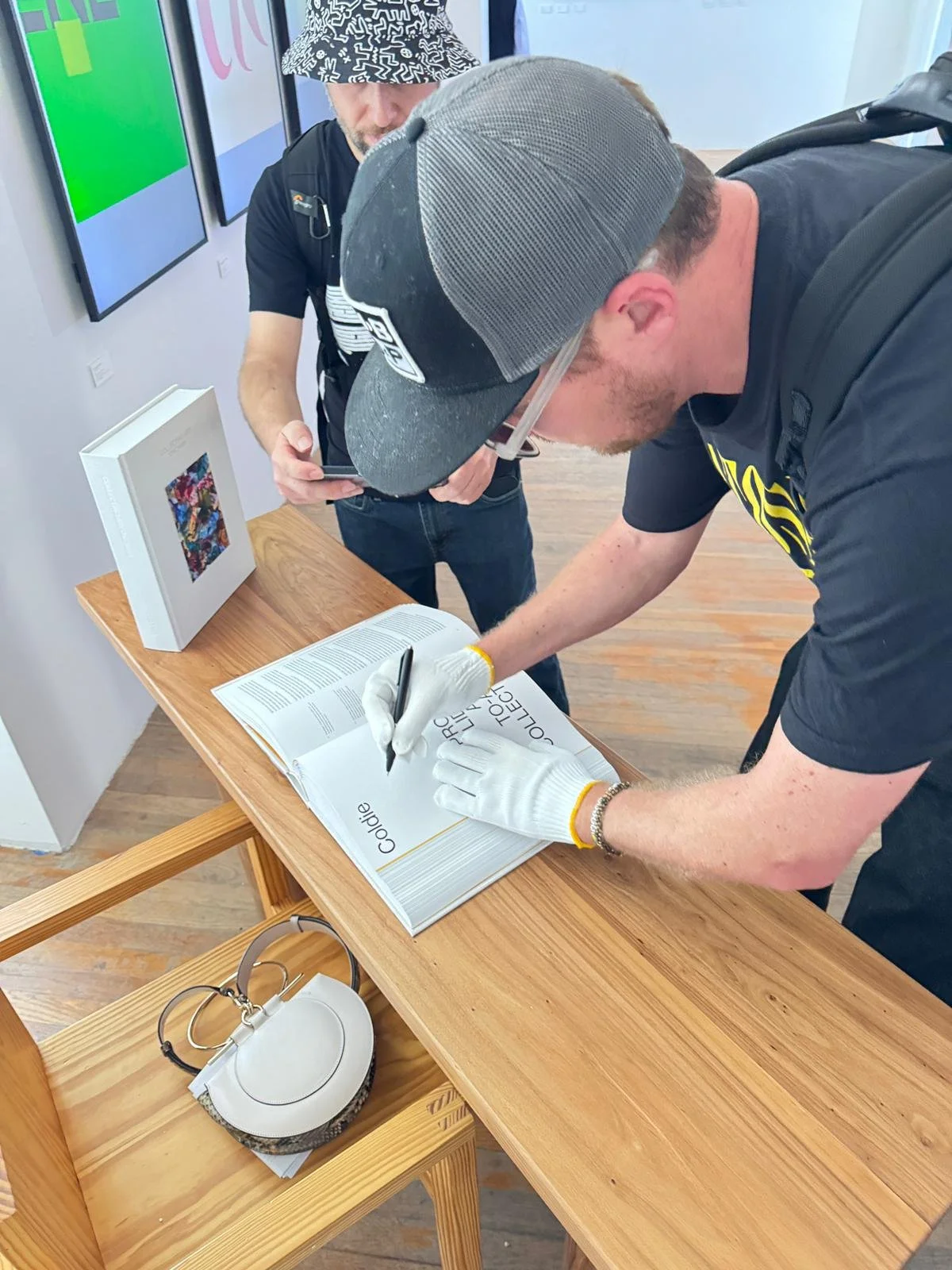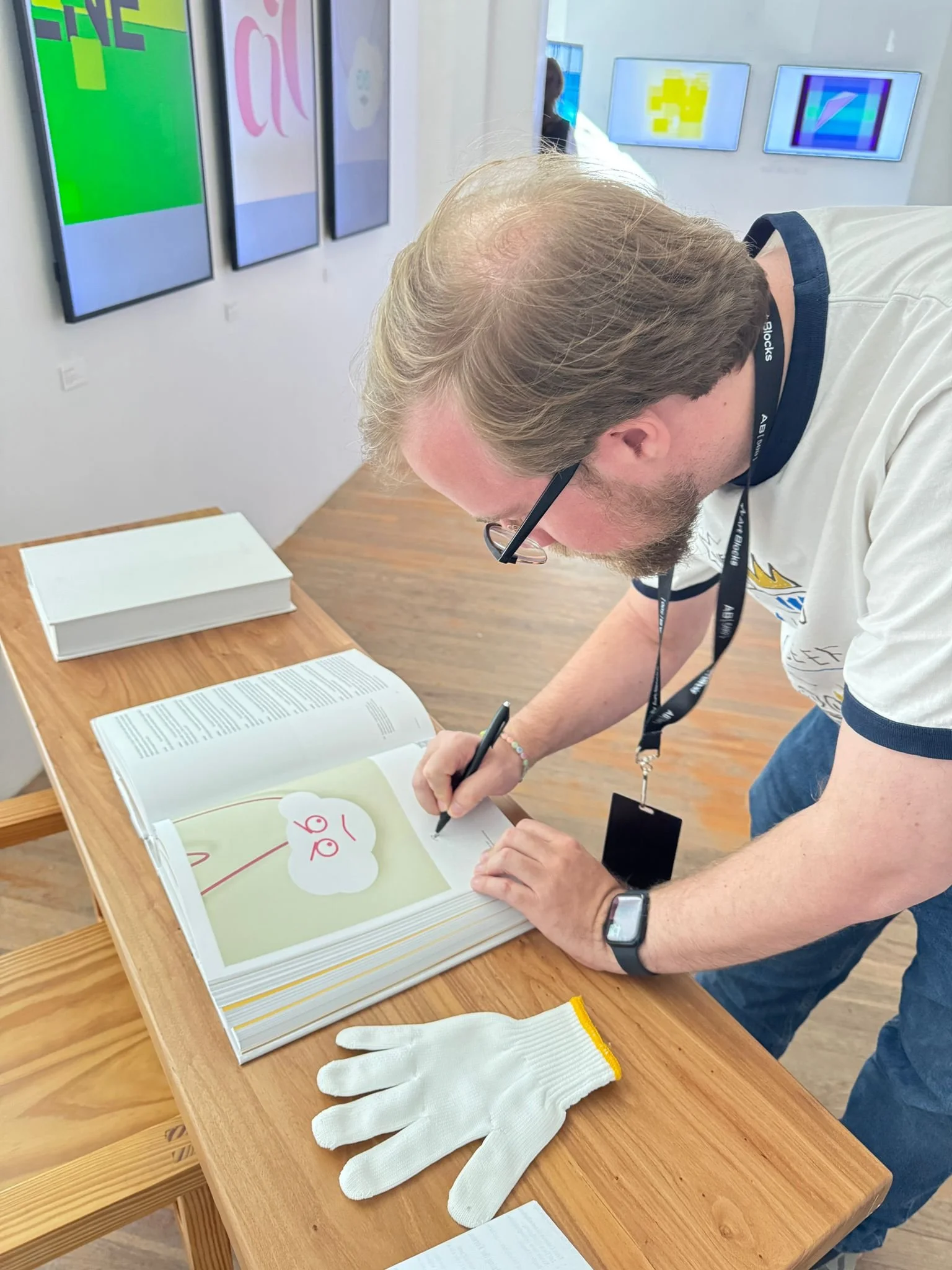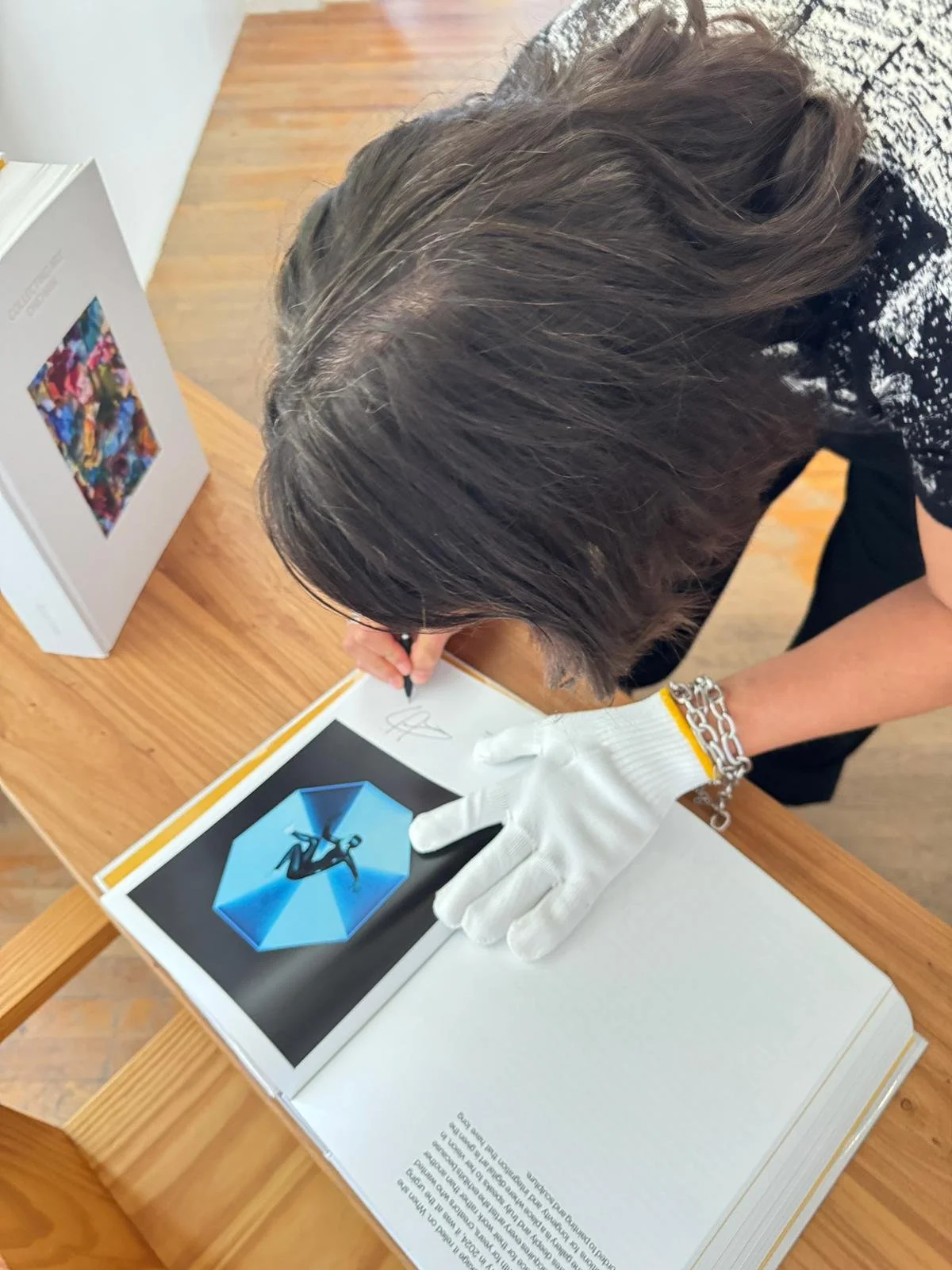Preserving Culture Through New Infrastructures
On October 17th, we pre-launched Collecting Art Onchain Collector’s Edition in Marfa — a place that felt almost inevitable as the beginning. Marfa has always been more than a location; it’s a state of mind. In the stillness of the desert, surrounded by art, friendship, and open sky, hundreds of us came together to celebrate what this space has always represented: creativity, collaboration, and community built from the ground up.
The edition we launched is more than a book. It’s a starting point — the first artifact of a broader vision: The Book On-Chain, an evolving system dedicated to preserving digital culture through a collective, on-chain memory. It’s about transforming how we think about art history in the Web3 era — not as a static archive, but as a living catalogue raisonné, authored by artists and collectors together.
I’ve been part of this world since 2016. I’ve seen it grow from small experiments into a global movement. I’ve witnessed both the radical energy that sparked it and the fragility that now threatens it. Having lived through those formative years, I know why this work matters and why I feel a responsibility to help shape what comes next.
When I think back to the early days, I remember the words that kept us awake at night: decentralization, transparency, independence. The promise was clear — that blockchain could serve as a tool of empowerment, restoring trust, provenance, and authorship. That art could exist outside traditional systems of control. And most importantly, that the bond between artist and collector could become direct and enduring — not mediated by institutions, gatekeepers, or speculative trends.
That human connection was always the real value.
But as the years unfolded, I began to see our field lean back toward centralization. Algorithms now curate what we see on X, the only platform that keeps the community connected. Marketplaces decide what matters. We’ve built new white cubes to resemble the old ones, where digital art must fit traditional expectations to be validated. Yet so much of what we create here was never meant to fit inside a frame or hang on a wall — it was meant to expand what art could be, and to reimagine how culture is shared, it’s meant to redefine the frame itself.
What we need next is not another marketplace.
We need is a system, the network of preservation — a collective archive where value is sustained through context, dialogue, and care.
Connection was always the real currency - Inside the Collecting Art Onchain book
The urgency of now
AI is changing the way we think, create, and even remember. We now rely on algorithms to write our emails, summarize our thoughts, and, increasingly, to express ideas on our behalf. These tools are powerful, but they also make something else fragile — our creative instincts, our inner voices, our capacity for slow, human thought.
If machines begin to speak for us, where does our creative soul live?
That question extends deeply into Web3. Ironically, the space that once promised decentralization now relies on centralized platforms to communicate. Twitter — or X — is our collective diary, yet its memory is short. Conversations disappear into endless feeds; context evaporates. Our cultural record dissolves faster than we can preserve it.
Even the artists who helped define this movement rarely have a full record of their own practice. Their code, statements, and reflections are scattered across GitHub, newsletters, and Discord threads. The story of digital art — arguably one of the most transformative cultural shifts of our time — risks surviving only as fragments.
A system for memory
This is why we need building a nonprofit open-source framework designed to preserve creative culture, to document the people, processes, and relationships that make this ecosystem meaningful before they fade.
THE BOOK is the foundation of this vision — A collective living archive where every contribution strengthens continuity, authorship, and trust. It invites artists and collectors to record their journeys, stories, and collaborations. For artists, it offers a way to construct a living catalogue raisonné — not just of finished works, but of research, code, sketches, and thought. For collectors, it provides a space to enrich their holdings with context — letters, conversations, provenance, and the relationships that shaped each acquisition.
Because what truly gives art its meaning is not only the work itself, but the why and how behind it — the moments of dialogue, experimentation, and trust that led there. These are the human traces of culture that deserve to endure.
Blockchain finally offers the architecture to preserve them. Once something is written on-chain, it remains — ready to be referenced, built upon, and reinterpreted. What we document today becomes the foundation for what future generations will understand tomorrow. They’ll see how we thought, collaborated, and built — not through market charts, but through human stories.
“Because the future of digital culture depends on more than technology. It depends on how we choose to preserve, contextualize, and connect what we create.”
Collectors and artists who have already supported the project signing the book at Marfa — Natalie Stone, Georg Bak, Coldie, DCA, Bryan Brinkman, Operator, Jeff Davis, Benny “RedBeard”, KarateKid, Kate Vass and many more.
A new infrastructure for culture
We are now developing the protocol that will bring this system to life. While on-chain publishing platforms exist, most are built for commercial goals — for sales, speculation, or self-promotion. Our vision is different: to create a nonprofit, open-source, Wikipedia-like infrastructure for Web3 art and culture.
A shared space that is decentralized, community-governed, and dedicated to collective knowledge rather than profit.
A place where memory is not curated by algorithms, but sustained by care.
A system that protects what was once fragile: context, conversation, and the truth of creative intention.
If you are an artist, collector, developer, or curator who still believes in why this all began — in freedom, transparency, and the right to remember — I invite you to join us.
We don’t need another platform to sell art.
We need a decentralized framework for cultural preservation.
A system that protects what was once fragile — the context, relationships, and intentions that make web3 culture unique and digital art human.
To protect what we’ve built together — before the noise of progress drowns out the human voices that made it possible.
Kate Vass with Collecting Art Onchain – Collector’s Edition, first released at the Art Blocks Gallery in Marfa.




































